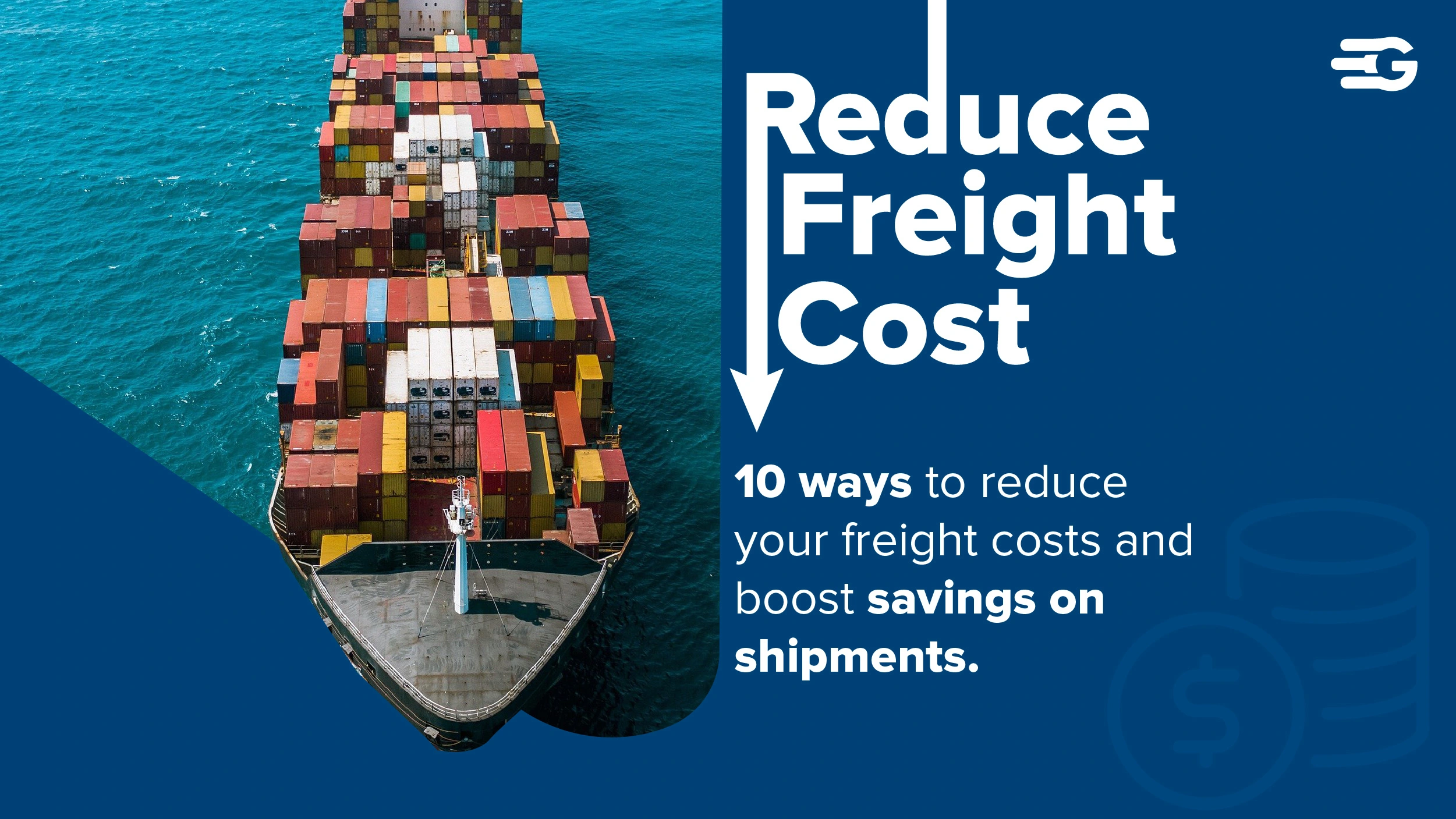12 ways to reduce freight costs immediately
For organisations that ship goods internationally, shipping cost accounts for a significant expense and its dynamic nature makes it close to impossible to spot opportunities for driving cost savings. Especially for businesses that are inventory intensive, logistics cost plays a crucial role in determining profitability.
However, there are several practices you can deploy to beat the unpredictable nature of freight costs and get the best prices every single time. Here are 12 steps that you can follow to reduce freight costs and drive substantial cost savings:
- Know the market and the prevalent rate
It is imperative that you keep track of market rates in order to be sure that you aren’t paying an unfair price for shipping your goods. A good way to ensure this is by adopting a modern-day supply chain software that will enable you to benchmark freight rates and help you negotiate rates better.
- Analyse the route
Route optimisation is yet another way to lower freight costs. Sparing some time to closely study the routes and figure out the best route available can go a long way in not only reducing price but also increasing overall efficiency.
- Plan effectively
Effective and advanced planning can help you prioritize your requirements while shipping goods. Moreover, carriers as well as freight forwarders, look forward to working with clients who have a clear vision of what they want. Thus planning your shipments well in advance will help you build a good relationship with them in the long run.
- Consolidated shipments
Typically, shipping in bulk is cheaper than shipping smaller consignments. You are more likely to get cheaper rates if you ship in bulk as it enables carriers to load a container more efficiently and also helps reduce the time spent in loading, unloading and processing multiple customers’ shipments.
However, consolidated shipments translate to larger quantities of inventory and inventory carrying costs but these costs are relatively less as compared to those incurred due to frequent shipping of goods in smaller batches.
Similarly, opting for consolidated shipments is a step forward towards achieving sustainability as it reduces the company’s carbon footprint.
- Scheduling shipments
Many times shippers unnecessarily treat all shipments as urgent in the hope of speedy delivery. Unless the goods are perishable, it is an absolute waste of money. Rushed orders incur higher costs and can be avoided through efficient planning.
Another factor that businesses tend to overlook is that off-peak days are a big cost saver. Your business can drive significant savings if you manage to leverage this factor. You can further reduce expenses by exploring the option of backhaul shipping. Factoring in all these minute details can cumulatively save significant costs.
- Optimize your cargo packing
One of the most simple ways to reduce freight costs is to simply pack freight more effectively. Ocean freight rates are usually calculated on the basis of the space occupied by the package and reducing dead space can go a long way in lowering freight rates.
- Understand your rate
It is crucial that you check everything that the freight rate of a shipment covers; whether the rate is port-to-port or door-to-door or does it include surcharges and more. Before signing any deal, ask these questions to avoid any surprises at the time of payment.
Companies with huge volumes that regularly ship freight to fixed locations can consider booking space with the same carrier at a stretch to get discounted rates.
- Apply triangulation when possible
Another interesting bargain is triangulation, carriers often offer a special deal for customers who are able to triangulate. Triangulation refers to the use of the same container for export and import which means that the company can export cargo from point A to B and also import from point B to A using the same container and carrier.
- Automate invoice reconciliation
Industry studies reveal that invoice processing costs around $5 to $12 per invoice. Add this to the sheer volume of invoices logistics teams receive, and it’s clear how costly the process can be.
Worst yet, the process is mundane, time-consuming and prone to errors that can make a huge difference to your bottom line, causing overpayment, and duplicate payments and lost productivity.
The best way to save this cost and increase efficiency is to adopt a system that automates the process of invoice reconciliation and approval and makes way for seamless audits.
- Use data to identify freight weaknesses
There are supply chain softwares/container tracking softwares available in the market today that collect the data generated by your supply chain and convert it into actionable insights. By leveraging the power of data you can identify the loopholes in your system and track and trace the cause of the problem as well.
Moreover, with the right data analytics, you will be able to precisely identify the vendors, routes and carriers that help you save cost.
11. Leveraging Technology
A slight overlap with the previous point of using data to help identify the right resources and save costs.
Freight Management Software: Upon implementation of the right software a business can optimize routing, load planning, carrier selection, and shipment tracking. These tools can identify cost-saving opportunities, reduce manual errors, and improve overall efficiency.
Real-time Tracking: Real-Time-Visibility for all shipments has perceivable benefits, small organisations to large enterprises implement such systems to proactively address potential issues, reduce delays, and minimize detention or demurrage charges, overall helping bring down freight costs. Learn more about Demurrage Fees and Their Role in Global Shipping.
12. Negotiate with carriers
Negotiating with carriers can significantly reduce freight costs. By have an understanding regarding your shipment volume, market conditions, and building strong relationships with reliable carriers, you can leverage your position to secure better rates. Effective negotiation involves thorough preparation, including benchmarking rates and identifying cost-saving opportunities.
In a nutshell, when it comes to keeping freight costs low the key is to have a fine combination of the right technology, strategic planning, strong relationships with vendors and clients and keeping up with the ever-changing market trends.
To reduce freight costs, get better Freight Quote, and build supply chain resilience, have a look at our end to end Logistics and Supply Chain Software or reach us out here.






